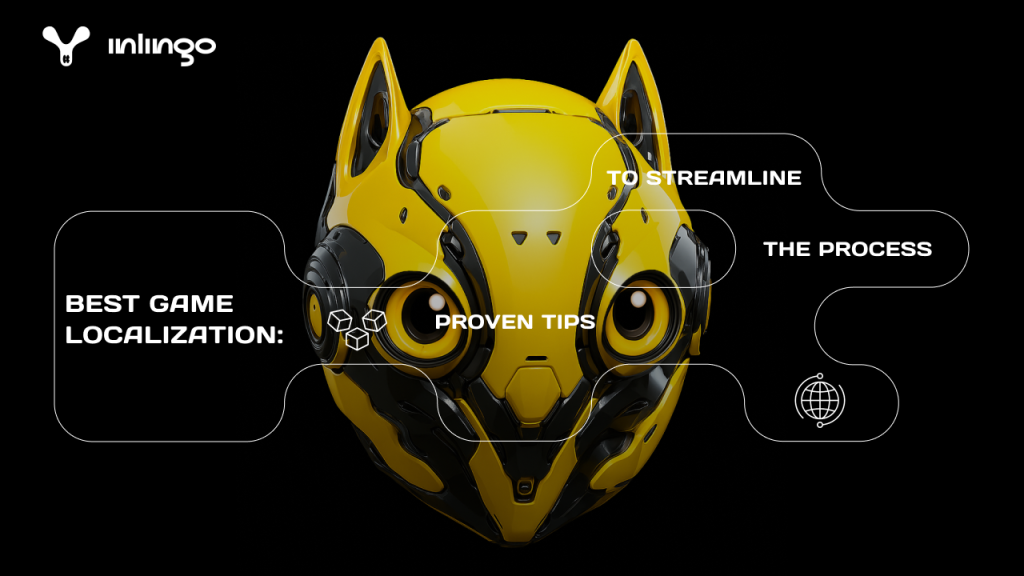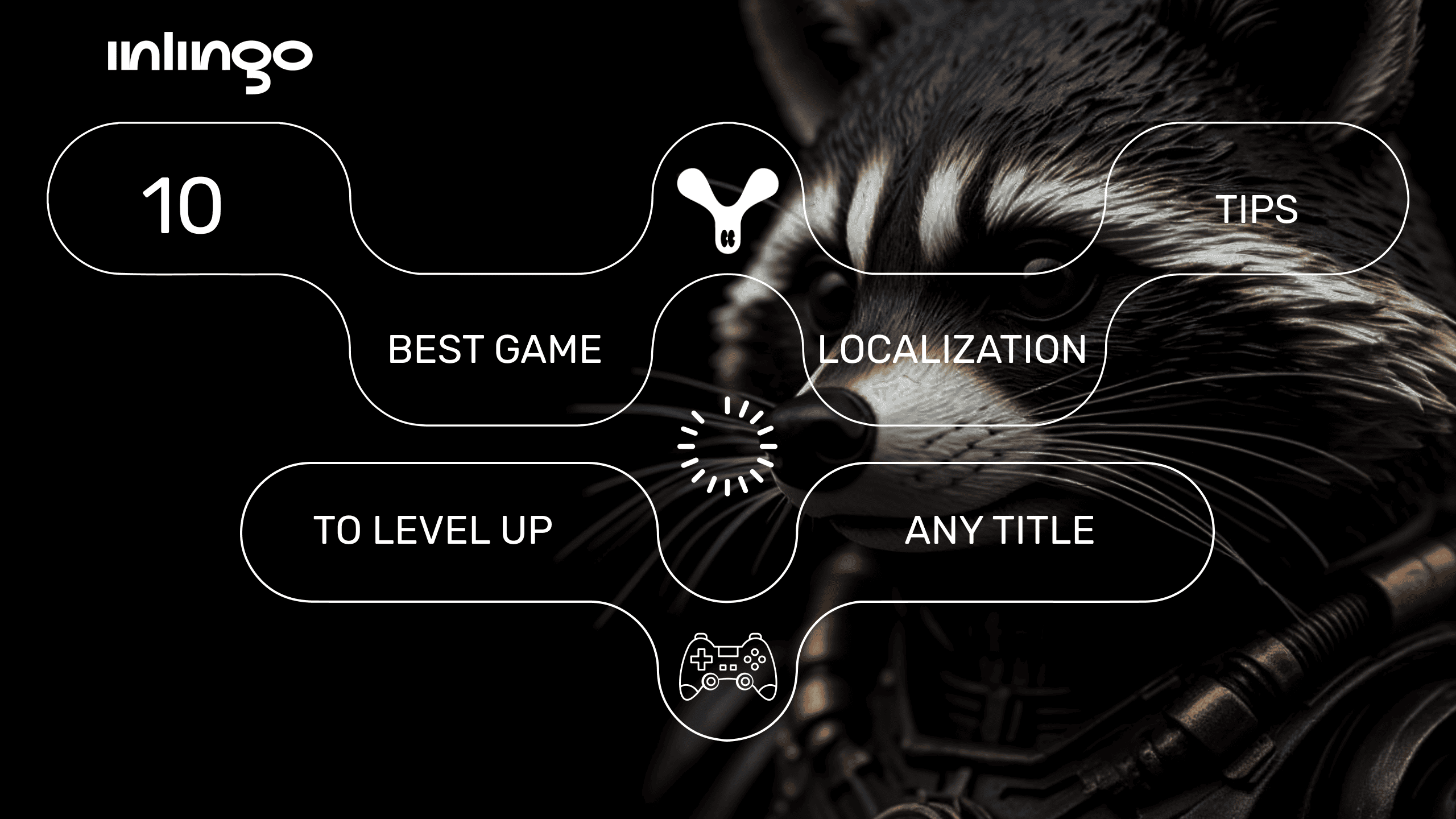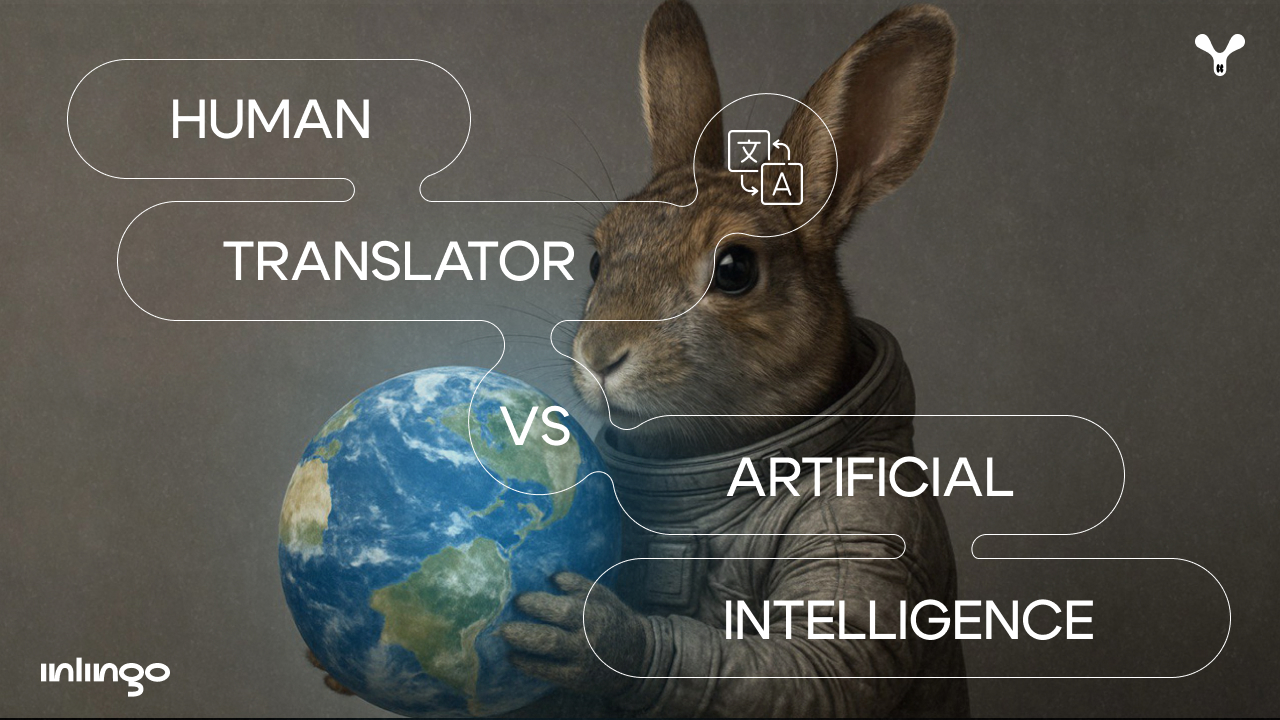Localization isn’t just about translating words—it’s about crafting a game experience that resonates with players across the globe. Smart localization boosts player engagement and broadens your reach. In this article, we’ll walk you through the essential steps of the process and share expert tips to make your localization projects smoother and more effective.
Building a solid localization strategy
Before diving headlong into localization, it’s crucial to have a well-defined strategy in place. A clear plan helps you avoid common stumbling blocks and make the most of your budget.
Identifying target regions
Choosing the right regions to localize your game for can make or break its success. Let’s explore key markets and what players in those regions are really looking for.
North America (U.S. & Canada): Gamers here crave action-packed experiences—think FPS, battle royale, RPGs, sports sims like NBA and FIFA, and real-time strategy games.
AAA blockbusters reign supreme, but there’s also serious love for indie games, especially those with a distinct art style or narrative twist. English is a must, and for some segments, Spanish is a great add-on. The competition is fierce, but so are the potential profits.
Europe is a somewhat different story. It’s a patchwork of preferences. Let’s break the continent down by country:
- Germany: Strategy titles (Civilization, Total War) and simulators (Farming Simulator) rule, along with deep RPGs.
- France: Big on adventure games and cinematic action, which is not surprising since Assassin’s Creed hails from here.
- Spain & Italy: Love mobile F2Pgames and sports sims.
- Poland: Hardcore RPG territory. The Witcher shaped a local appetite for rich, narrative-driven games.
Localization into local languages is non-negotiable here. Some countries, like Germany, also have strict content laws, especially around violence.
In Asia, the popularity of certain games also varies from country to country.
- Japan: Gamers flock to JRPGs, visual novels, and mobile gacha hits (Genshin Impact, Fate/Grand Order).
The console scene here is massive thanks to homegrown giants like Nintendo Switch and PlayStation. Top-tier localization—voice-overs or, at the very least, quality subtitles—is expected.
- China: Big on MOBAs (Honor of Kings), mobile RPGs, and battle royales (PUBG Mobile).
The industry is tightly regulated, with licenses being mandatory and legal compliance crucial.
Steam access here is unofficial, and mobile rules the market. Localization into Simplified Chinese is simply a must.
- South Korea: Think MMORPGs (Lineage, Lost Ark) and eSports powerhouses (LoL, StarCraft). PC bangs (gaming cafés) are a key game distribution channel.
It’s a hyper-competitive market, but the rewards can be huge.
Latin America is passionate and growing. F2Ptitles (Free Fire), mobile RPGs, and soccer/football sims dominate the area. Brazil is the largest market in the region, but keep in mind that spending power may be lower than in the U.S. or Europe. Localization into Brazilian Portuguese is essential, because, no, it’s not the same as European Portuguese.
In Mexico, players often switch between English and Spanish. Overall, the market is culturally aligned with the U.S.
Where should you launch? Well, that depends on your genre, budget, and vision. Got a niche indie gem? Europe or the U.S. is your best bet to start. Building an F2P title with a global appeal? China and South Korea are goldmines, but be ready to invest big in localization, compliance, and marketing.
Pinpoint what needs localization
Localization is about customizing the entire game experience for each target audience. Here’s what that can include:
- Text—dialogues, UI, item descriptions.
- Graphics—in-game text, banners, and cultural visuals.
- Audio—VOs, sound cues, and ambient effects.
- Legal Elements—age ratings, data privacy laws, and regional compliance.
- Marketing materials regarding the game.
The big decision? Whether to go all-in with full localization or focus on just a few elements, like the UI. That choice depends on a few key factors:
- Target market & audience expectations
Players in some regions are totally cool with original VOs and subtitles, so minimal localization might be just fine. In places like Scandinavia, players don’t mind content in English. But in countries like France or Germany, they often expect a fully localized experience—voices and all.
- Budget & resources
Let’s be real: a full localization project, especially recording voice-overs or redesigning graphics, can be expensive. If you’re working within tight constraints, prioritize the essentials like the interface and critical in-game text to maximize impact while minimizing costs.
- Game genre & format
Story-driven games like RPGs or visual novels demand deep localization to maintain immersion. Every line matters. But if you’re working with arcade-style games or casual simulators, a streamlined translation of menus and instructions might be all you need.
- Navigating technical constraints
Don’t forget the backend (software and code)! If your game engine or UI doesn’t support text expansion or non-Latin fonts, full localization could become a technical headache. Always assess your platform’s flexibility before wading in.
- ROI potential
Think strategically. If a new market shows strong promise, a full localization effort could pay off big time. For uncertain regions, start small: localize the basics, test the waters, and scale up if the results are strong.
Mind the technical details
The technical side of localization is absolutely crucial to making sure your game content displays correctly across different languages. Here are the critical aspects you should think about from the start:
- Multilingual support in your code
Build with global players in mind from day one. Instead of hardcoding text, use external files (JSON, XML, or CSV) to store your translations.
Game engines like Unity and Unreal Engine already come equipped with built-in localization tools to make this process much smoother.
- Text length flexibility
Not all languages are created equal when it comes to space. German phrases can be much longer than their English counterparts, while Chinese tends to be more concise.
If your UI uses fixed-width fields, you might run into display issues. The fix? Implement dynamic text scaling or automatic line wrapping to keep things readable.
- Use universal encoding (UTF-8)
UTF-8 is the gold standard; it supports the characters and symbols of virtually every language.Outdated encodings like Windows-1251 (often used for Russian) can cause character display glitches.
- Right-to-left (RTL) language support
Languages like Arabic and Hebrew require special attention because they read from right to left.
Your engine must handle RTL display properly, including UI alignment.
In some cases, even interface elements—like buttons or icons—may need to be mirrored to maintain a natural, intuitive user experience.
Building a localization kit (lockit)
A lockit (short for localization kit) is your ultimate toolbox, a curated set of files and guidelines designed to supercharge your localization team’s efficiency. It ensures consistent content, top-notch quality, and a smooth translation process from start to finish.
What goes into a solid lockit?
- Source texts: All in-game text: dialogue, UI, item descriptions, tutorials—everything. Context notes to help translators understand where and how content appears in the game. Character limits are essential when space is restricted by the game’s code.
- Glossary of terms:
- Key terms that must stay consistent across all game versions.
- Character names, place names, in-game items—lock them down.
- Style guidance—forms of address, slang usage, and how to handle proper nouns.
- Tone & style guidelines:
- Define your Tone of Voice—serious, humorous, or neutral.
- Examples of dos and don’ts to keep everyone aligned.
- Tips for adapting jokes, references, and cultural nuances for each language.
- UI Screenshots: These are a visual guide showing how text will look in the actual game.
They help prevent classic context mistakes, like mistranslated button labels.
- Audio assets (for games with voice acting):
- Voice-over scripts with clearly marked dialogue lines.
- Timing details to sync speech with character animations.
- Reference samples to match the original tone and emotion.
- Formatting instructions:
- Tags, variables, and placeholders (e.g., {player_name} instead of the actual name).
- Rules for handling special characters and punctuation in different languages.
To get the most out of your lockit, these tools are lifesavers:
- MemoQ, Smartcat, Trados Studio—CAT tools with glossary support for streamlined translation.
- Google Sheets, Excel—perfect for organizing project text, terms, and notes.
- Poedit—great for working with the .po files commonly used in game engines.
- Crowdin, Lokalise—platforms for collaborative localization workflows.
- Unity localization package, Unreal localization dashboard—built-in tools for localization in popular game engines.
The localization process itself
Once the prep work is done, it’s time to dive into the real action, that is, localization. This phase also unfolds in several key steps.
Getting to know the game
Before translating a single word, the localization team must fully immerse themselves in the game. The goal? To capture the original style, mood, and meaning with precision. This deep dive includes several crucial stages:
1. Studying the documentation
Localizers kick things off by exploring all relevant materials, including:
- Game Design Documents (GDDs) detailing gameplay mechanics, storyline, and characters.
- Style guides and tone of voice references.
- A glossary of key terms.
- Screenshots of the game’s interface.
2. Test playthrough
The team gets hands-on experience with either a demo or the full version of the game. They pay close attention to how players interact with the interface, in-game text, and voice acting. During this phase, they also spot potential trouble areas like texts that might not fit within limited UI space.
3. Character & dialogue analysis
Next, localizers identify each character’s style of speech—is it formal, casual, or full of slang? They determine which characters require a special approach, such as those with accents or unique speech patterns. They also assess how player choices impact dialogue flow.
4. Checking technical constraints
The team examines how the text is implemented in-game: Do the systems support different languages, special characters, or various date formats? Can text length in the UI be adjusted if needed? These technical details are instrumental to avoid hiccups down the line.
5. Collaborating with developers
Localizers maintain close communication with game designers and writers. They clarify ambiguous terms, discuss cultural elements that may need tweaking for different regions (and players), and confirm meanings behind complex or game-specific terminology.
Armed with this in-depth understanding, the team is now ready to tackle the translation with confidence and clarity. This thorough, thoughtful approach ensures a smooth localization and an exceptional player experience, no matter the language.
Content translation
Translation is the beating heart of game localization—a stage where in-game text is adapted for a new audience while keeping the original vibe, style, and ease of understanding. But this isn’t just a mechanical word swap—it’s a creative process that demands attention to detail and deep knowledge of the gaming industry.Here’s how the magic usually happens:
- Initial translation. The core content is translated first: dialogues, UI elements, item descriptions, and quests. This draft is then checked to ensure it meshes with the intended gameplay experience.
- Editing & proofreading. Editors step in to refine the translation for grammar, style, and clarity. They fix errors, polish tricky phrases, and make sure each character’s voice stays consistent. If needed, they consult with developers to clarify intent.
- In-game integration. The localized text is implemented into the game and tested in real-time gameplay scenarios. This stage checks for proper content display, variable functionality (like {player_name}, {score}), and issues such as line breaks or character limits are fixed.
Key success factors at this stage:
- Preserving meaning & emotion
Literal translations fall flat in games. It’s all about capturing the spirit of the original—not only the words. Humor, idioms, and cultural references need to be smartly localized for the target audience.
- Staying true to the game world
Characters need to sound like themselves—an ancient wizard and a brash young warrior won’t talk the same way. Item names, spells, and location titles should feel natural and immersive to the player.
- Navigating technical constraints
Some game engines impose strict text length limits, especially in UI elements. Translations need to fit without losing clarity.
Variables like {player_name} and {score} should blend seamlessly into sentences without breaking grammar rules.
- Harmonizing terminology & style
Keeping terminology and tone consistent across the entire project avoids confusion among players. A well-maintained glossary and style guide are your best friends here in maintaining consistency.
Pro tips to level up your game content:
- Understand the context before you translate. Always know where and how a line is used in the game. Without context, it’s easy to trip up—take the word “run,” for instance. Is it “to sprint” or “to launch”? In Russian, that’s the difference between “бежать” and “запускать.”
- Know your gamer slang. Words like “mana” in RPGs might not need to be translated at all.
- Keep it snappy. Players often skim dialogue—or skip it altogether. That means your lines should be short, punchy, and super readable.
- Mind the UI limits. Make sure your translated text fits within the game’s interface.
Voice-over recording
Voice acting is a major part of game localization, and it’s much more than just reading lines. It shapes the player’s emotional connection to the story and can make or break immersion. The process is complex and creative, involving everything from script adaptation to studio recording.
Here’s how a great game VO comes together:
- Script prep. The final translated script is tailored for spoken delivery. Lines are marked up with emotion cues, intonation notes, and pauses to guide actors.
- Casting. Voices are carefully selected to match the original characters, considering age, tone, and personality.
- Studio recording. Lines are recorded with full awareness of in-game context. Sometimes, re-records are needed.
- Editing & sync. The audio gets cleaned up, balanced, and synced to match character animations.
Pro tips for superior voice acting:
- Cast with cultural insight. Choose voice actors who sound authentic to your target region. A natural voice that resonates with local players is the key to immersion.
- Watch your timing. Some languages take longer to say the same thing. Lines must fit animations and sync with lip movements if applicable.
- Give actors context. Actors need to understand the scene (the hero’s emotions, the stakes, the vibe) in the game. The more they know, the more lifelike the performance. Always double-check the emotional delivery—it should feel just like the original.
Linguistic Quality Assurance (LQA) check
Linguistic Quality Assurance (LQA) is the final and crucial stage in the game localization process. This is where every detail of the localized content is put under the microscope, ensuring translation accuracy, stylistic consistency, cultural adaptation, and seamless integration into the game. Once your LQA team is assembled, the process moves through the following steps:
- Text content review. Every line of translated text is analyzed within the context of the game. This includes correcting translation errors, typos, and style mismatches, while also evaluating the readability and natural flow of the text.
- UI/UX validation. This step ensures that localized strings are properly displayed within the game’s interface. Testers check text length, making sure it doesn’t overflow buttons or menus, and verify dynamic variables (like {player_name}, {score}) are working correctly.
- Audio & visual testing. Testers listen to localized voice-overs to ensure the tone, emotion, and delivery match the original intent. They also check lip-sync accuracy, ensuring that characters’ mouth movements align with the localized dialogue. Subtitle testing includes verifying proper timing and alignment with the audio.
- Final report & fixes. After testing, the team compiles a detailed report highlighting any issues. Necessary changes are made, whether it’s adjusting translations or tweaking code, and then the game is retested to confirm everything is spot-on.
There are two types of LQA:
- Internal QA. This is when the game is tested by the same linguists and native speakers who worked on the localization. It’s a thorough, behind-the-scenes process, just as described above.
- Focus groups. Here, the game is shared with players from the target regions to gather real-world feedback. These players identify bugs, awkward phrasing, or anything that disrupts their gameplay experience.
Pro tips for effective LQA:
- Test in-game, not just in files. Some issues only reveal themselves in the actual context of gameplay.
- Work with native speakers. They instinctively pick up on tone, cultural nuances, and subtle mistakes.
- Don’t skip technical checks. Even the most flawless translation is worthless if it gets cut off in the UI.
Game localization is a complex but crucial part of game development. A clear strategy, a solid localization kit, and thorough QA can make all the difference—ensuring your game resonates with players across the globe. Use the latest tools, involve native linguists, and your game will conquer new markets!
Looking for expert-level game localization? INLINGO has you covered. We work with projects of all shapes and sizes, having already localized hundreds of games across genres and platforms.




